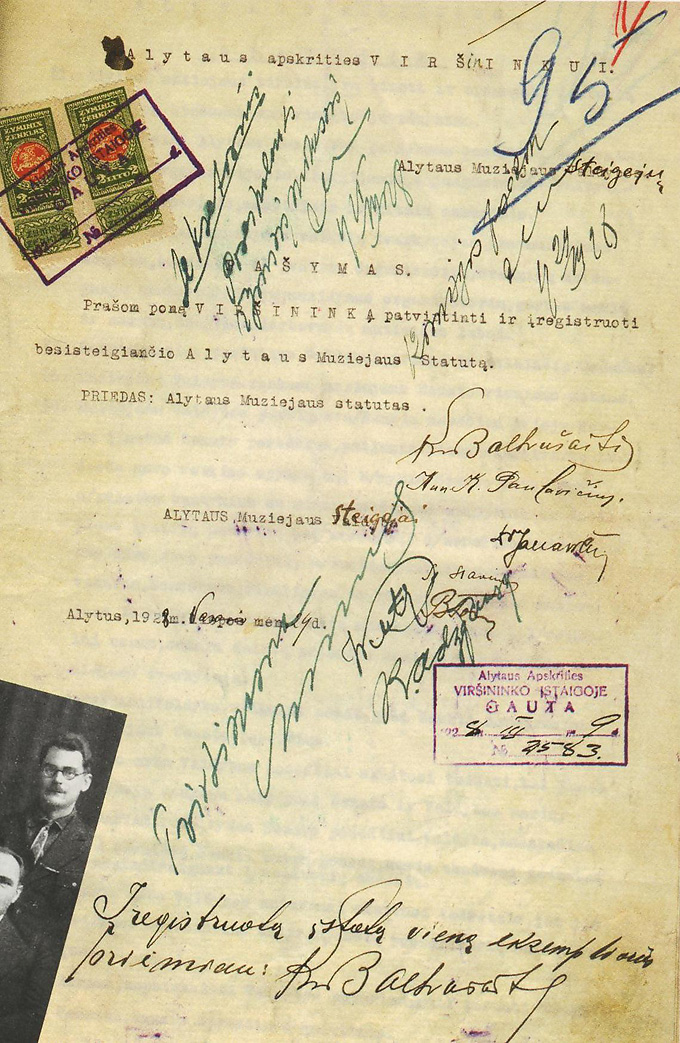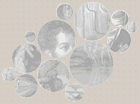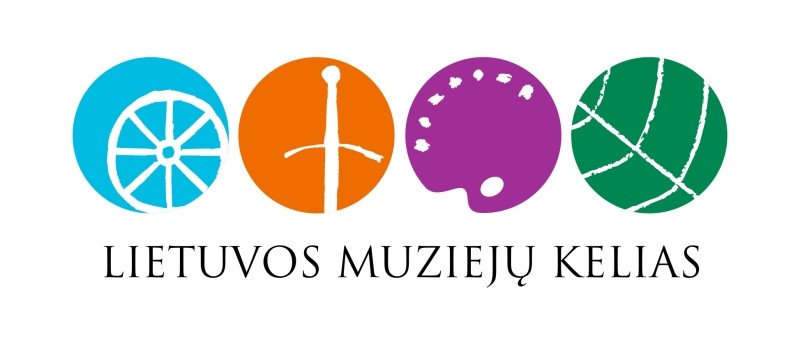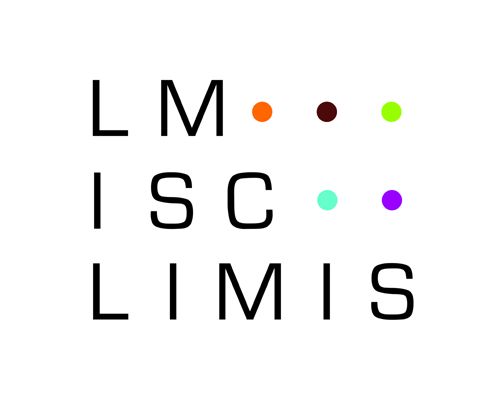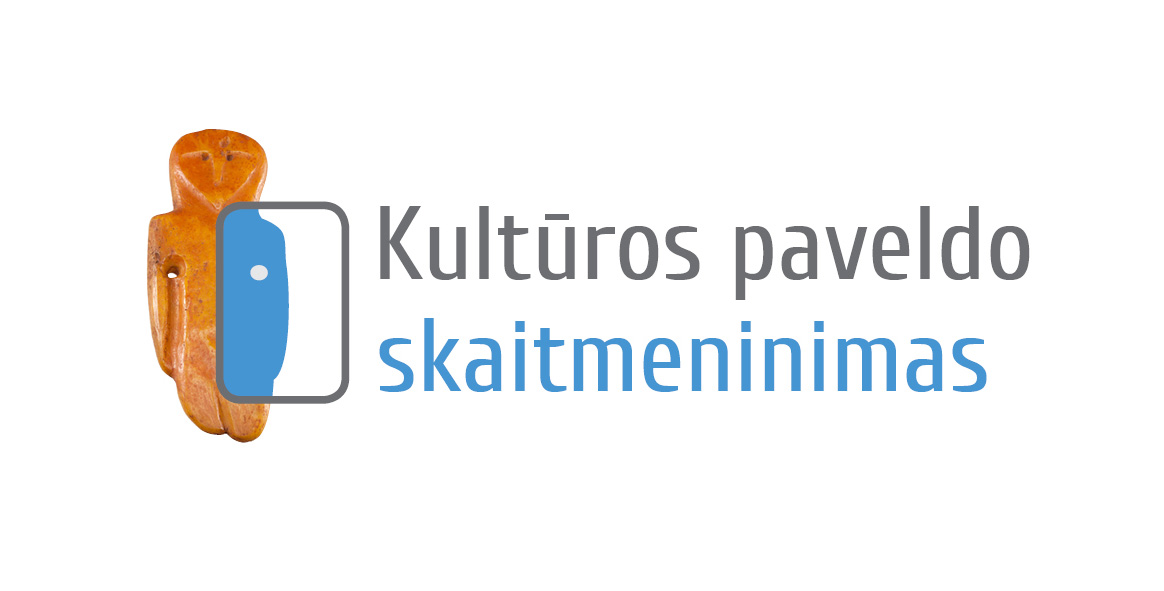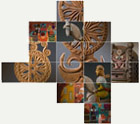The first attempt of Alytus inhabitants to set up an organization interested in the national culture and the past can be considered the Dzūkijos Aušros society registered in the office of Alytus County Governor on 13 January, 1920. The society split very soon because its founders piled out. Only after seven years a new group of activists started museum related work again: S. Janavičius, a county doctor, K. Paulavičius and P. Baltrušaitis, priests, S. Slavėnas, a teacher and R. Adžgauskas, a civil servant.
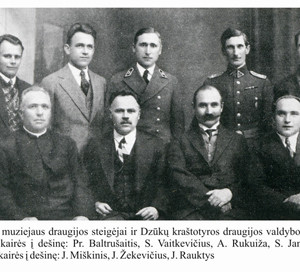 On 24 April in 1924 these volunteers of cultural work registered the museum of Alytus in the office of Alytus County Governor. The aim of the society was ‘to collect and protect the remainder of Lithuanian culture from complete destruction‘. Practical implementation of these plans turned out to be much more difficult than expected. New members were difficult to attract to work, so the museum was being created very slowly. In 1934, while the museum society was at work, some of its members (S. Vaitkevičius, M. Žilinskas, S. Janavičius, P. Baltrušaitis) started creating a new one – Dzūkija Regional Society – which was involved in the same kind of activities. For a year, both of the societies– museum and regional studies – functioned parallelly. In spring of 1935 Alytus museum was linked to the Dzūkija Regional Society and was named Dzūkija museum and operated under the supervision of Dzūkija Regional Society. On December 30, 1935 Alytus Museum Society was closed under the decision of Commission for Registration and it was deleted from the list of the Society Register.
On 24 April in 1924 these volunteers of cultural work registered the museum of Alytus in the office of Alytus County Governor. The aim of the society was ‘to collect and protect the remainder of Lithuanian culture from complete destruction‘. Practical implementation of these plans turned out to be much more difficult than expected. New members were difficult to attract to work, so the museum was being created very slowly. In 1934, while the museum society was at work, some of its members (S. Vaitkevičius, M. Žilinskas, S. Janavičius, P. Baltrušaitis) started creating a new one – Dzūkija Regional Society – which was involved in the same kind of activities. For a year, both of the societies– museum and regional studies – functioned parallelly. In spring of 1935 Alytus museum was linked to the Dzūkija Regional Society and was named Dzūkija museum and operated under the supervision of Dzūkija Regional Society. On December 30, 1935 Alytus Museum Society was closed under the decision of Commission for Registration and it was deleted from the list of the Society Register.
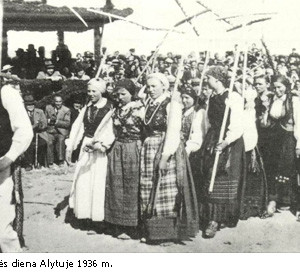 In 1936 Dzūkai Regional Society was the only organization interested in the past of the native country, seeking ‘to protect its ancient vestige and historical materials‘. In its articles Dzūkija Regional Society undertook to collect ancient excavations and archaeological materials, ancient works, documents, memoirs, pictures, money and engravings‘, gather folklore and establish museums for keeping collections and ancient vestige. Dzūkija Regional Society inherited a very talented organizer, A.Rukuiža, Director of Alytus Higher Forestry School, who converted teaching rooms into small museums. He was the leader of the society up till the summer of 1936. He was accompanied by other active members: doctor S. Janavičius, school inspectors J. Miškinis and M. Židanavicius.
In 1936 Dzūkai Regional Society was the only organization interested in the past of the native country, seeking ‘to protect its ancient vestige and historical materials‘. In its articles Dzūkija Regional Society undertook to collect ancient excavations and archaeological materials, ancient works, documents, memoirs, pictures, money and engravings‘, gather folklore and establish museums for keeping collections and ancient vestige. Dzūkija Regional Society inherited a very talented organizer, A.Rukuiža, Director of Alytus Higher Forestry School, who converted teaching rooms into small museums. He was the leader of the society up till the summer of 1936. He was accompanied by other active members: doctor S. Janavičius, school inspectors J. Miškinis and M. Židanavicius.
With the help of the county teachers, people of the society organized Ancient Days which had a response all over Lithuania. During these events people of the district remembered ancient songs, laments and dances, and admired colourful clothes taken from chests to the light of the day. Soon after the first Ancient Day in 1936 Alytus museum was moved to the address 25 Vilnius street. A. Rukuiža was appointed the Director of Forestry Department of Lithuania, so J. Miškinis, a school inspector, later a teacher of Alytus Gymnasium, took over the post of the leader of the society. In his memoirs published in emigration J. Miškinis wrote that there were departments of pro-history, numismatics, fine arts, sculpture, ecclesiastical art, clothing, textile, house wares, hunting, fishing, agriculture, primitive ancient machines, wood processing tools, press suppression and art paintings. In 1939 the value of all property of the society, including exhibits and furniture of the museum, was 25,000 Lt. In June of 1940, when the activities of all the societies of Lithuania were stopped, re-registration of societies started. On 27 July, 1940 the Minister of Internal Affairs gave permission for the society to start its work again. Teachers L. Nadzeika, E. Šneideris and V. Bartlingas took turns to take care of the museum. People were always rotating: Some emigrated to the West, others were sent by the new government to the East for ’improvement’. The museum was robbed three times: when the soviet army came, later – the Germans, and once again the history repeated itself after the war. There were attempts against the name, not only the exhibits – in 1947 the museum was named Alytus Regional Museum. For a long time the museum vegetated. The situation changed in 1957 when a young energetic teacher Henrikas Lizdenis came to Alytus. From his previous workplace in Varėna he brought Lizdenis Museum – a collection of exhibits of archaeology and ethnography. At that time the museum moved to other premises, the basement of the previous Culture House (10 S.Darius and Girėnas Street) where new departments of history, archaeology, folk art and soviet construction – the attribute of the latter time- were set up. H. Lizdenis could be awarded inexhaustible soviet medals as well as honourable titles of a lover of his native land, pompously but truly we could call him the leader of the idea and work in Alytus regional studies. He organized expeditions, helped public museums, participated and made reports in research conferences. He was also a member of a steering committee for establishment of the Regional Society of LSSR, the chairman of the steering committee of the regional society of LSSR for the establishment of Alytus regional department, the member of the Museum Scientific Supervisory Board under the Board for Preservation of Cultural Monuments.
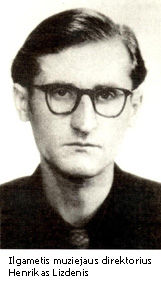 Under the leadership of H. Lizdenis traditional folk art exhibitions were held next to the permanent exhibition of the museum. They helped to reveal a lot of distinctive amateur artists and masters of old crafts. The best articles of the exhibition were added to the collections of Alytus and other museums. In 1988 capital renovations of the Culture House, where the museum was sheltered, started. The administration of the museum, together with part of the exhibits, had to move to small premises at 3 Basanavičius Street. The rest of the exhibits were paced in the previous Jewish school in M. Margytė (now Savanoriu) Street. The permanent exposition of the museum was also dismantled. The period of spiritual prosperity, which lasted for twenty years, came to an end. The employees of the museum changed frequently and in 1976 H. Lizdenis was changed by V. Palevičius, a student of Vilnius University. Correspondence with various offices of the Republic concerning the funding for the premises of the museum in M. Margytė Street lasted for three years. The reconstruction began in 1979. The employees of the museum changed again. From the previous employees only A. Kalašnikoviene remained. She is still working as senior conservator of the collections. A. Rybelis, a qualified historian, started to head the museum. In 1981 together with the celebration of the 400th anniversary of the autonomy of Alytus, the renovated building of the museum was opened and several exhibitions were arranged. But soon the spoilage of the constructors emerged and in 1989 the premises of the museum were considered being in the condition of emergency. The activities of the museum were limited though the exhibition hall was open and the traditional Dzūkai Days were also held. At that time the employees of the museum concentrated on other work: archaeologist E. Svetikas organized archaeological expeditions, excavated old graves in the districts of Alytus and Lazdijai, Bazorai cemetery, villages around the mounds of Giluičiai and Alytus, delivered lectures, organized ethnographic expeditions, etc.
Under the leadership of H. Lizdenis traditional folk art exhibitions were held next to the permanent exhibition of the museum. They helped to reveal a lot of distinctive amateur artists and masters of old crafts. The best articles of the exhibition were added to the collections of Alytus and other museums. In 1988 capital renovations of the Culture House, where the museum was sheltered, started. The administration of the museum, together with part of the exhibits, had to move to small premises at 3 Basanavičius Street. The rest of the exhibits were paced in the previous Jewish school in M. Margytė (now Savanoriu) Street. The permanent exposition of the museum was also dismantled. The period of spiritual prosperity, which lasted for twenty years, came to an end. The employees of the museum changed frequently and in 1976 H. Lizdenis was changed by V. Palevičius, a student of Vilnius University. Correspondence with various offices of the Republic concerning the funding for the premises of the museum in M. Margytė Street lasted for three years. The reconstruction began in 1979. The employees of the museum changed again. From the previous employees only A. Kalašnikoviene remained. She is still working as senior conservator of the collections. A. Rybelis, a qualified historian, started to head the museum. In 1981 together with the celebration of the 400th anniversary of the autonomy of Alytus, the renovated building of the museum was opened and several exhibitions were arranged. But soon the spoilage of the constructors emerged and in 1989 the premises of the museum were considered being in the condition of emergency. The activities of the museum were limited though the exhibition hall was open and the traditional Dzūkai Days were also held. At that time the employees of the museum concentrated on other work: archaeologist E. Svetikas organized archaeological expeditions, excavated old graves in the districts of Alytus and Lazdijai, Bazorai cemetery, villages around the mounds of Giluičiai and Alytus, delivered lectures, organized ethnographic expeditions, etc.
In 1988 museum director V. Laurinavičius started the construction work. Under his guidance the museum was rebuilt very quickly using all projection possibilities of that time. A small friendly team of museum employees (two researchers, an artist, senior conservator of the collections and a restorer) launched new permanent expositions. In 1990 Alytus Regional Museum was enriched by two branches: poet A.Matutis Memorial Museum in A. Matutis Street and poet A. Jonynas Memorial Museum in Liškiava Street.
During the recent decade the museum has been famous for its unconventional events propagating cultural heritage of Dzūkija region and Alytus city, exhibitions, educational events, literary evenings, craft fairs which originated from Ancient Days, conferences and miscellaneous projects. In 2005 the endeavours of the museum were rewarded by Museum Association of Lithuania in the Idea Fair for the idea of the Crafts Yard which was considered to be the best. In 2006 the work of museum employees was appreciated with the award of Alytus City Culture. Educational work of the museum is considered one of the most innovative in Lithuania. The museum is actually an archive, a library, a museum, and a cultural centre in a certain way. It is attention to the past and the history of the native land.
Alytus regional museum, the biggest museum in Southern Lithuania, celebrated its eightieth anniversary. The people working for the museum are young, full of nice innovative ideas which are put into practice. They are trying to change the face of the museum so that people who visit it would like to return. Carrying on the social-cultural mission, Alytus regional museum fosters the memory of the past, communicates information and witnesses the singularities of the identity of our city.
